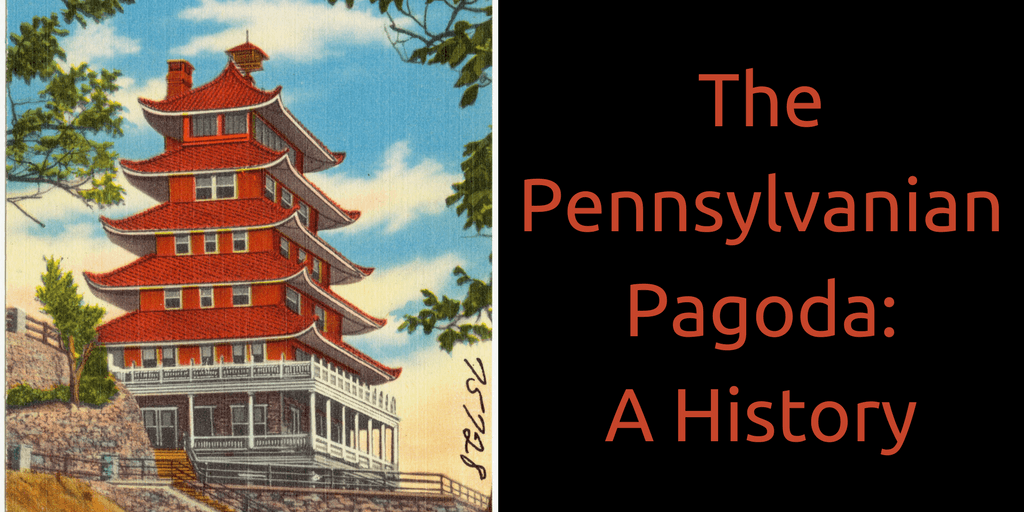The Pennsylvanian Pagoda: A History
In the early 1900’s, a businessman by the name of William Abbott Witman Sr., hired a father and son contracting team to design and construct a 5-story luxury hotel in the likeness of a pagoda. The location for this pagoda wasn’t in Japan or China, nor was it in a predominantly Asian country. This large pagoda structure was actually to be built in the United States, atop the beautiful mountains of Pennsylvania, in a small town named Reading.
Curious and charming, this Pennsylvanian pagoda still stands today, and has brought joy and tourism to Reading, PA for over 100 years. Even with its true history shrouded in rumors and legend, the Pagoda is one of Reading’s most recognizable buildings, rising 886 feet above the city. Although residents are now incredibly fond of the unique structure, its journey to popularity is what makes the Pagoda so intriguing and worth exploring.
Origins of a Landmark Uncovered
On August 10, 1906, a simple headline gracing the Reading Eagle started it all: “Reading to Have Japanese Pagoda,” the paper read. As mentioned above, William Abbot Witman, Sr. was the man behind this construction. Amidst outcries that Witman’s stone quarry business was defacing portions of Mt. Penn, Witman decided to construct the Pagoda atop his quarry and restore the faith of the locals. The project wasn’t completely founded in a pure-of-heart fashion, however. Witman was actually a mayoral candidate, and with his quarry business closing due to the amount of complaints surrounding it, he also saw the Pagoda as a way to win favor with voters.
The inspiration for the design still remains a bit of a mystery. James and Charles Matz, the father and son team Witman hired to take on the Pagoda project, are said to have played a big part in the design of the Pagoda. Rumor has it that Charles Matz used a photograph he acquired while on a tour of duty in the far east as inspiration. With no real proof on record, others have claimed the building was designed from an image in a book about the Shogun dynasty. In fact, records obtained from the Historical Society of Berks County reference a postcard, only perpetuating rumors of the true inspiration.
A Change of Hands and a Change of Plans
Sadly, Witman’s hopes of a mountaintop resort were crushed when he was denied a liquor license, seemingly in a political move by the local Judge. With the absence of a liquor license, Witman was unable to successfully open the resort, and the Pagoda suffered a foreclosure by the Farmer’s National Bank.
It’s at this point of the story that things start to get even more interesting.
The director of that same bank, Jonathon Mould, was facing difficult circumstances as the bank was on the brink of severe losses. Mould decided to purchase the failed Pagoda and its 10 acres of land to help save the bank. A year later, Mould and his wife sold the property to the city of Reading for $1. The sale was seen as a gift to the city and as an opportunity to improve Reading’s parks and boulevards initiative.
The Pagoda was immediately put under construction with many of the improvement projects, including the planting of 10,000 trees and the addition of running water and electricity, lasting for the next several decades.
Wartime Speculation
With the country in the midst of World War II in the early 1940’s, all of the improvements came to an end. The Pagoda was neglected for some time and was under threat of demolition as many, biased against the Japanese from the war, wanted nothing to do with Japanese culture. A debate on the design origins began, and although parts of the Pagoda were considered a safety hazard because of neglect, the Pagoda was saved by a team of Berks Countians that wanted to see the Pagoda repaired.
To save the reputation and future of the Pagoda, rumors began surfacing that the design was of Korean origin. This helped to cloud the truth behind the Pagoda’s design, inherently keeping the building safe from demolition.
The Fate of the Reading Pagoda
To this day, the city of Reading continues to care for the Pagoda; equipping it with a gift shop and restoring the facade of the building. There are many mysterious things about the Pagoda that still go unanswered, including the apparent Buddhist origins of its massive bell. Only adding the appeal, these mysteries are what make Reading’s Pagoda one of a kind. Full of interesting history and placed upon a beautiful plot of acreage, the Pagoda of Reading, PA is a landmark that can still be enjoyed today and is certainly one not to be missed.

